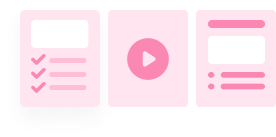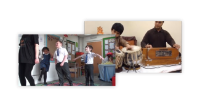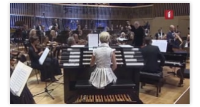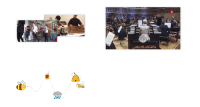Minibeasts Level: Key Stage 1 - Creative music
Music Lesson Description
Birds and Peanuts (timbre)
An activity for pairs of children. First discuss with the whole group of children what birds like to eat. Then at various points in the day, the children go in pairs to the music corner and each choose an instrument that makes a completely different sound (timbre). One is the bird pecking the food (eg wooden claves) and the other is the peanuts in a bird feeder (eg a shaker).
The children make up a little sequence of music about the bird eating the nuts by taking turns to play. This sequence is by Holly and Florence using claves and a shaker made of nut shells on a string.
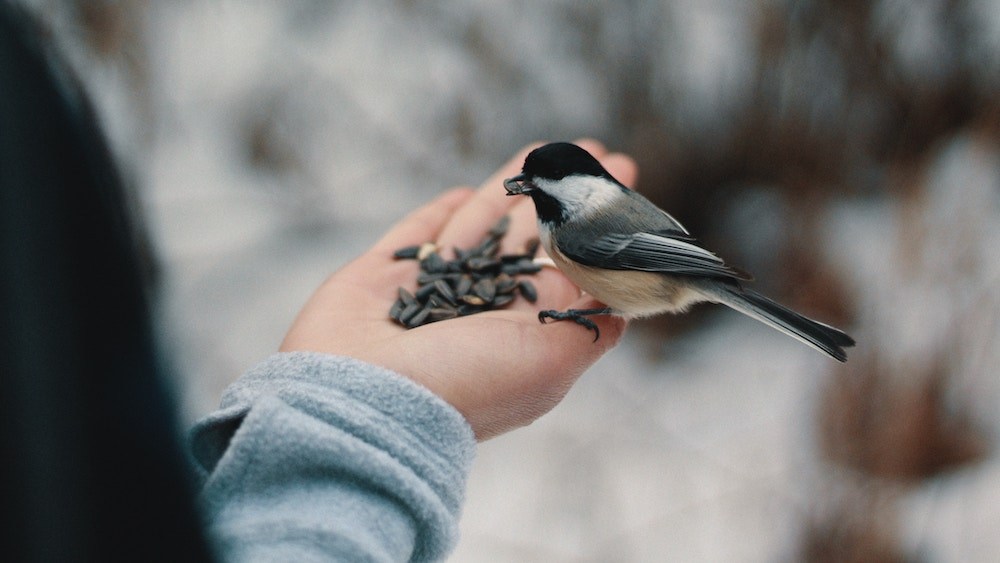
Extension Activity (tempo, dynamics)
As an extension, the children could make another difference by changing the way they play their instrument - for example:
- Dynamics - Play the claves quietly and play the shaker loudly
- Tempo - Play the claves quickly and play the shaker slowly
Whole Class Activity
You could do this as a whole class activity even if you don't have enough instruments, by having two children playing instruments and the rest of the class using body sounds like clapping for the bird and rubbing hands together for the shakers.
The piece of music can be given a name, then recorded so the children can listen.
Stick Insects (and birds)!
Clap, then play, the word rhythms of minibeasts or birds. Then represent the sounds in sticks, which are a bit like 'proper' notation. To work out how to do this, space the words out evenly as if in a grid. Then draw sticks close together to represent saying a two-syllable word eg robin that takes up just the same time as saying a one-syllable word eg owl. Here's a picture to explain it:

A Maxibeast!
No one knows who wrote this poem, but we like it!
- Consider the poor hippopotamus
- His life is unduly monotonous
- He lives half asleep
- On the edge of the deep
- And his face is as big as his bottom is!
You may need to explain some of the words, then teach it by rote. When the children can say it fluently, they can have a go at singing it to their own tune. Given the suggestion, more children than you might imagine can spontaneously make up a tune for a poem without any help at all.

